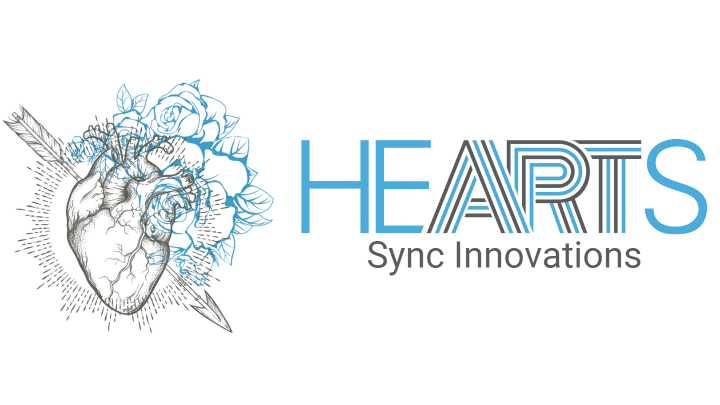The widespread myth: "Once you have arthritis, there's little you can do against pain while working from home – the course is predetermined." The opposite is more likely. Ergonomics, smart movement, and nutrition modulate inflammation, peak load, and muscle tension – factors that determine your pain and performance daily. Clinical reviews and technological solutions show: targeted routines can reduce complaints and stabilize workflows – without a decline in performance, but with more energy and focus.
Arthritis is a collective term for joint diseases that cause pain, stiffness, and functional impairments. Common forms include rheumatoid arthritisautoimmune disease with systemic inflammation and osteoarthritisdegenerative joint disease due to cartilage wear. In the home office, three drivers converge: prolonged sitting, repetitive hand movements, and suboptimal workplace design. This increases mechanical micro-loads on joint surfaces and tendons and amplifies inflammatory stressinflammatory processes that promote pain and tissue damage. The goal of smart management is to dose the load, dampen inflammation, and economize muscle work – in order to increase concentration, pace, and regeneration in daily life.
Ergonomic adjustments reduce pain and stabilize work capability. A review of ergonomic interventions in hand therapy shows that adapted tools and contextualized strategies reduce pain, lower injury risks, and increase productivity – especially among those with arthritis in the upper body and hand area [1]. The absence of wrist and arm supports increases wrist extension and shoulder muscle activity; the use of bilateral armrests reduced muscle load and subjective discomfort during screen work – a direct lever against pain-driven performance losses [2]. Anti-inflammatory nutrition addresses the systemic component: omega-3 fatty acids, polyphenols, and antioxidants modulate inflammatory pathways and oxidative stress; reviews report reduced disease activity and improved well-being in rheumatic conditions [3]. Movement technology bridges the gap between knowledge and implementation: app-based programs for osteoarthritis patients are expected to improve training adherence and thereby pain, function, and quality of life – particularly relevant since inactivity exacerbates pain and functional loss [4]. Joint braces provide mechanical relief: in knee osteoarthritis, bandages reduced the range of motion and moments at the joint during daily load activities like climbing stairs; patients reported less pain and better function [5] [6]. Innovative, assistively powered orthoses show in pilot studies additional pain and effort reductions during demanding activities [7].
Ergonomics in the work context: An invited literature review summarizes that ergonomic modifications – from task design to holistic routines – reduce pain and injuries and increase productivity. Positive results were particularly observed in rheumatoid arthritis; the authors emphasize telehealth and situational learning as keys for sustainable implementation, which directly addresses home office setups [1]. The evidence includes detailed workplace elements: a randomized intervention with screen workers demonstrated that bilateral arm supports normalize wrist position, lower trapezius activity, and reduce complaints – a concrete, measurable effect on muscular and joint-related loads during typing and mouse use [2]. Nutrition as an inflammation modulator: A comprehensive review shows that omega-3 fatty acids, fibers, polyphenols, and antioxidant vitamins positively influence inflammatory pathways and the oxidative milieu; Mediterranean and hypocaloric patterns may improve disease activity. The mediating mechanism via the gut microbiome – through eubiosis and barrier function – provides biological plausibility for clinical effects and supports personalized strategies in autoimmune arthritis [3]. Technology-supported movement: Sedentary behavior worsens knee osteoarthritis, while moderate exercise has pain-relieving effects. An app with personalized programs, monitoring, and medical connections is being tested for efficacy against standard consultation in an RCT; expected benefits include better adherence, pain reduction, and cost efficiency – crucial for home offices where inactivity lurks [4]. Orthotic research: Biomechanical studies show that knee braces reduce angles and moments during stair climbing in patellofemoral osteoarthritis – plausible mechanisms for less pain [5]. Imaging data also indicate improved biochemical cartilage markers following unloading orthoses, alongside clinically relevant pain and function improvements [6]. Pilot data on backdrivable exoskeletons report further reductions in pain and quadriceps-activating load during everyday tasks, expanding future conservative options [7].
- Set up your workspace proactively: An ergonomic keyboard, mouse, and an adjustable, comfortable chair relieve hands, shoulders, and back. Add bilateral arm supports to normalize wrist angles and protect shoulder muscles [1] [2].
- Eat anti-inflammatory: Plan for 2–3 servings of fatty fish per week or supplement with omega-3 from algae oil; incorporate berries, leafy greens, olive oil, and nuts. This supports inflammatory and oxidative balance and may dampen disease activity [3].
- Smartly automate movement: Use apps or wearables with micro-break reminders every 30–45 minutes. Integrate 150 minutes of moderate exercise per week in short, planned blocks; technology-supported programs increase adherence and improve pain and function in osteoarthritis [4].
- Stabilize joints when they "speak": Test light bandages or specific unloader orthoses for load-intensive phases (e.g., standing meetings, stairs). Studies show reduced joint moments, less pain, and better function; innovative, assistively powered solutions are an option under higher loads [5] [6] [7].
The coming years will bring more precise, personalized therapies: digital coaching ecosystems that connect ergonomics, movement, and nutrition based on data, as well as lightweight, intelligent orthoses with adaptive support. RCTs on app interventions and advanced backdrivable exoskeletons will show how significantly pain, function, and productivity can be sustainably optimized while working from home [4] [7].
This health article was created with AI support and is intended to help people access current scientific health knowledge. It contributes to the democratization of science – however, it does not replace professional medical advice and may present individual details in a simplified or slightly inaccurate manner due to AI-generated content. HEARTPORT and its affiliates assume no liability for the accuracy, completeness, or applicability of the information provided.













